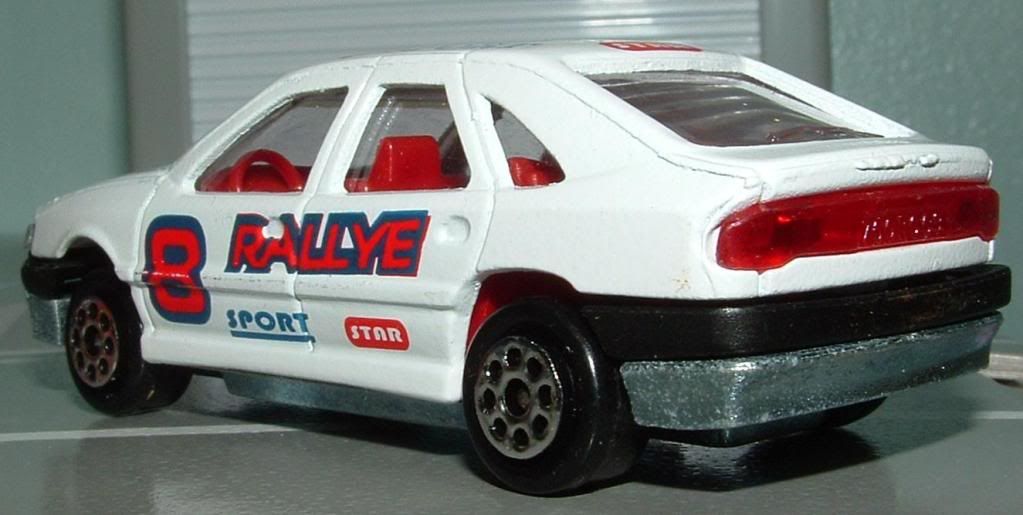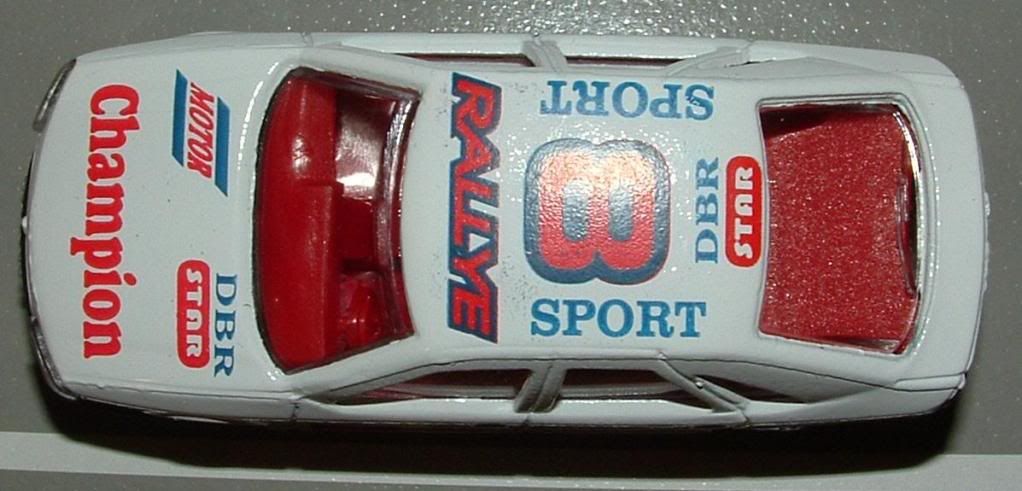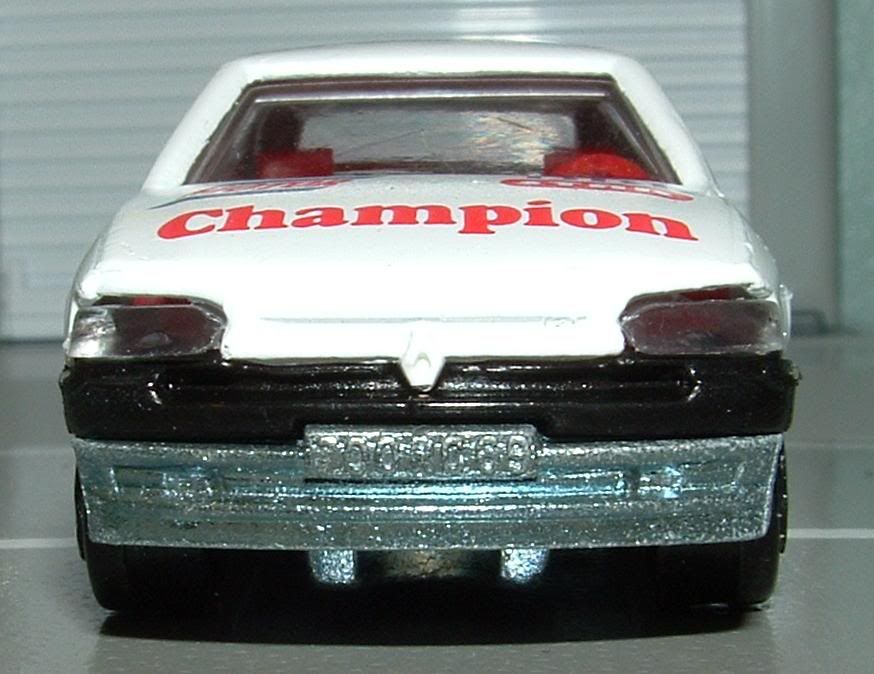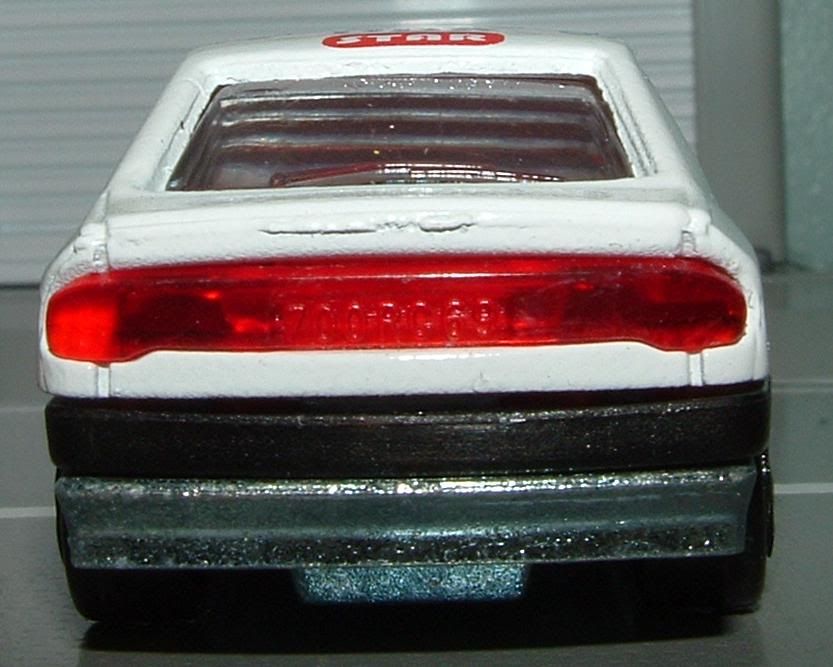
A blog focusing on 1/64 diecast from such popular brands as Hot Wheels, Matchbox, Johnny Lightning, M2 Machines, GreenLight, Tomica, Yat Ming, Majorette, MotorMax, Siku, Corgi, Guisval, Playart, Ertl, Zylmex, Racing Champions, & many more. Swifty's Garage features a daily Car Of The Day and news updates from your favorite brands!
Saturday, March 12, 2011
Car Of The Day: March 12, 2011
Today's car of the day is Majorette's 1993 Renault Safrane.
The Renault Safrane was an executive car designed and built by the French manufacturer Renault from 1992 to 2000. Throughout its lifespan it remained the most expensive and most luxurious Renault available. It was replaced by the Vel Satis, and to some extent by the short-lived two-door Avantime.
Starting 2008, a new model, based directly on Renault Samsung SM5 sedan, is also called Renault Safrane.
For more information and pictures of the real car please visit: Renault Safrane
A lot of diecast manufacturers have gone to the extreme of dressing up their plainer castings with racing graphics in order to appeal to kids. Sometimes it works...but most of the time it fails. But rarely does it fail to quite the level seen here. Not only do the graphics look entirely out of place on the Safrane, but the tampos themselves are horrible! They're not in the normal locations for sponsorship decals, they're not based on any real companies, and they really spoil an otherwise fantastic little casting.
The Safrane was launched in late 1992 to replace the ageing Renault 25 in the full-size market segment. Its clean, aerodynamic styling was quite conservative and very typical of early 1990s car design, also quite reminiscent of the 25's.
All Safranes were five-door liftbacks with transversely mounted engines. Front-wheel drive and four-wheel drive versions were available, with a range of petrol or diesel engines and manual or automatic transmissions. All petrol engines were fuel-injected and were fitted with three-way catalytic converters, as required in Europe after 1993 for engines of all sizes. The Safrane was also the first Renault to be equipped with air bags.
The Safrane carried over the Renault 25's five-door hatchback design that had gained wide customer acceptance in France. Despite the traditional preference for sedan bodies in the executive car segment, Renault decided to compete on the base of added practicality of the rear tailgate and split-folding rear seat (not available from most sedan-bodied competitors), as well as originality. Given the preference for German sedans from Audi, BMW and Mercedes-Benz of many executive car buyers, this can be viewed as good marketing tactics, allowing Renault to draw the buyers looking for alternatives, rather than compete head-on. The series 2 Safrane featured slightly (but visibly) different front ends in different versions, in an attempt to emphasize the unique status of more upmarket models, although these treatments differed in different markets.
The Safrane's design was a deliberate effort to overcome the R25's main weaknesses — insufficient chassis stiffness and poor build quality. Renault was also keen to take noise reduction to best-in-class levels. These constraints resulted in a much heavier car than its predecessor (+200–300 kg / 440-660 lb.) due to a heavily reinforced chassis and the liberal use of sound-proofing materials.
The Safrane's launch was free of the build quality problems that ruined the Renault 25's reputation. Critics praised the car's comfortable and spacious interior, excellent noise insulation, and incisive handling. However, the manual transmission's cable-actuated shifter (a first on a Renault) drew heavy criticism for its rubbery, uncommunicative feeling that spoiled the driving experience — a significant issue in the European market where more than 80% of cars sold are manuals.
Critics would also conclude that the car's acceleration and fuel economy was not up to the competition's standards, pointing out towards the engine's relative lack of power and torque compared to the vehicle's weight. As a result, sales outside France (where national preference guaranteed good results) remained limited, and the Safrane did not break the Germans' lock on the executive car market.
In late 1993, a 115 PS 2.5 L turbodiesel has been added to the range, increasing Safrane's attractiveness, yet it faced tough competition from the likes of Audi's 140 PS (103 kW; 138 hp) direct-injection diesel of the same size, introduced a few months later in the Audi 100.
Subscribe to:
Post Comments (Atom)






No comments:
Post a Comment